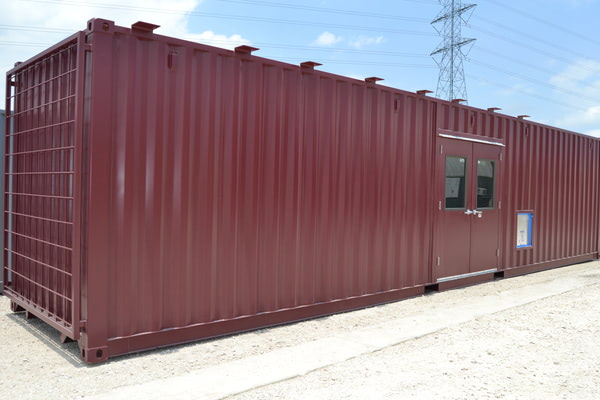Shipping Container Farms — Turning Pavement Into Produce
 Marissa Morin | Dec 29, 2021
Marissa Morin | Dec 29, 2021

Food deserts — the lack of nutritious and affordable fruits and vegetables in urban areas — are a growing concern. But shipping container farms are helping turn all that pavement into fresh produce and productive gardens, allowing urban communities and city environmental groups to grow fresh fruit and vegetables in the heart of the city.
We’re talking more than a few heads of lettuce or the occasional strawberry. With the use of steel shipping containers and advanced climate technology to create optimal growing conditions, growers can produce high-quality yields of a variety of crops. Here, we’ll share the benefits of shipping container farm buildings, along with two innovative companies that have found success.
The Benefits of Shipping Container Farms
In addition to providing fresh produce for schools, food banks, cafeterias, restaurants, and other organizations, the most obvious benefit of shipping container gardens is their small footprint. Because they’re mobile, they can be placed most anywhere in a community. Instead of a sprawling field, a 20 ft. container can fit easily on a driveway, parking lot, or alleyway and produce incredible yields.
Additional benefits of shipping container farms include:
- Climate controlled environment for optimal yield
- Faster and more efficient harvest times
- Cost-effective solutions
- Conserves water and natural resources
- Reduces the need for pesticides
- Allows for a year-round growing system
- Secure containers minimize theft and vandalism
Urban Farm Units

Let’s take a look at an interesting farming experiment using shipping containers to produce organic fish, fruit, and vegetables right in the middle of city streets. Urban Farm Units (UFU) are taking standard ISO shipping containers, adding a greenhouse structure on top, and creating an ideal growing environment inside.
It’s an interesting way of rethinking cities, food production, and consumption. This above-ground urban garden uses hydroponic farm techniques with nutrient-rich water, industrial greenhouse scaffolding, and an open-top 20-foot steel shipping container to create the urban garden.
The inherent design of a shipping container, including its standard dimensions, strength, and stacking ability, creates the base for the ideal urban farm. This above-ground solution brings the ability to have fresh produce close to the source of consumption. Whether it’s a local restaurant sourcing organic produce or the local consumer desiring a farm-to-table selection, these UFUs are the ideal urban solution.
Freight Farms
No greenhouse effect is used with Freight Farms’ solution as they use LED lights to grow plants year-round in a completely enclosed 20-foot steel shipping container. A one-acre farm in a 320 sq. ft. box is possible with the right climate control, hydroponics, and LED lighting to simulate night and day. This Boston-based company introduced a scalable farming platform that can be operated anywhere.
The ISO shipping container offers a water-resistant structure that can withstand extreme weather conditions. The standard dimension construction of a steel shipping container allows for vertical farming with its stacking ability, creating a multi-level urban farm without using a larger piece of land.
Both of these innovative farming solutions offer the ability for any community or business to begin its own sustainable farming effort and grow agriculture in shipping containers regardless of the weather and space available.

Compact, urban farms are just one way to use repurposed shipping containers. Check out our Guide to Modified Shipping Containers to understand the possibilities and what you need to consider.
SUBSCRIBE
- Shipping Container Modifications
- How-Tos
- Workspace
- Commercial Construction
- Multi-Container Buildings
- Storage Solutions
- Industrial Enclosures
- Bathrooms & Locker Rooms
- Oil & Gas
- Climate Control
- Green Building
- Living Space
- Industry Insight
- Military & Training Facilities
- Water Treatment Solutions
- Energy
THINK INSIDE THE BOX®
WITH OUR BLOG
Get everything from shipping container basics, to detailed how-tos and industry news in our weekly blog. Stay inspired and subscribe!
RELATED BLOGS

7 Shipping Container Maintenance Steps to Help You Prep for Winter
Marissa Morin | Jan 6, 2021 | 2 min read
READ MORE

Guide to Shipping Container Sizes & Types
Becca Hubert | Dec 13, 2023 | 4 min read
READ MORE

Infographic: Fascinating Facts about Shipping Containers
Paige Welsh | Nov 21, 2017 | 1 min read
READ MORE
